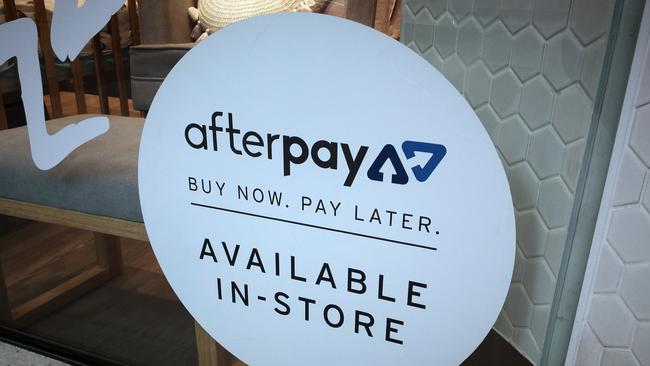
This column understands the duo are quietly plotting a first quarter 2020 launch to take on the incumbents Afterpay and Zip in the local instalments industry.
The plans are being kept under wraps but given Klarna has more than 170,000 merchants in 14 countries and agreements with brands including Ikea, Sephora, H&M, Adidas, Zara, Nike, Lenovo and ASOS, you can be sure it’s a multi-pronged strategy.
CBA has the most merchant terminals in Australia so it would make sense for that to be used by the partnership.
Klarna and CBA gave away no detail on their plans when announcing their alliance in August. A CBA spokesman also declined to comment on Thursday.
But the size of the threat can’t be ignored. Founded in 2005 Klarna is now among the biggest fintech companies in the world.
CBA was part of a funding round for Klarna in August which lifted its valuation to $US5.5bn ($8.1bn). The bank made an investment and entered an exclusive partnership for Australia and New Zealand.
Klarna’s global reach became even clearer this week when it partnered with Samsung for payment plans. Its release said three options were being offered to customers: buy now, pay in 30 days, spread the cost over a period of up to four years, and pay in three monthly payments.
That comes as analysis by McLean Roche Consulting puts the Australian and NZ buy now, pay later markets in a markedly worse position on bad debts than those in Europe.
It estimates bad debts in Europe sit at about 20 to 35 basis points of sales, while players in Australia and NZ range from 90 to 134 basis points with Afterpay at the top end of that range.
The sector was again in the spotlight this week when Latitude Financial’s float was yanked from the transaction pipeline and UBS took a swipe at Afterpay’s model and slapped a sell rating on it.
UBS wrote of excessive growth being priced in and too little attention by investors to growing regulatory risks in the sector. The broker’s bearishness was underscored by an Afterpay price target of $17.25, compared to Tuesday’s close of $36.56.
UBS said Afterpay was vulnerable to competition due to a “relatively low level” of upfront investment and low barriers to entry. UBS did note, however, that Afterpay had a significant first-mover advantage.
UBS identified Klarna’s tie-up with CBA as a potential threat but also highlighted countermoves by MasterCard, American Express and Visa.
Prior to that report, tech pundit Scott Galloway was critical of the buy now, pay later sector because in his view it lacked distinct economic “moats” that help to keep competitors at bay.
Still, Afterpay has made big name appointments this year including the corporate regulator’s Michael Saadat and more recently appointed former US Treasury secretary Lawrence “Larry” Summers to its US advisory board.
AMP exit day nears
As AMP’s deadline for advisers approaches at the month’s end, there is another obstacle for those heading for the exits.
For some preparing to leave the loans provided to their financial planning practices — by AMP Bank — must be repaid in full so that they can take their client books without being shackled by a longer non-compete period. AMP Bank isn’t able to finance planning practices outside of its own network, a rule that is being reviewed, but remains in place.
At its interim results, AMP Bank’s loans to aligned practices amounted to $418m, net of expected credit losses of $93m. So it’s not small change.
The refinancing issue has floored some advisers who are opting to either redraw from their mortgage or seek alternative sources to refinance. One of those is understood to be new business bank Judo which has seen a spate of AMP advisers seeking finance. Judo is said to be primarily looking at loan sizes above $500,000.
The exits come after AMP boss Francesco De Ferrari outlined a new wealth structure and a cut to the amount being offered under a buyer of last resort program.
This column understands the restructure assessed a range of metrics, but aimed to cull planning practices earning annual revenue of $250,000 or less. Not including firms that had already applied for the buyer of last resort program, about 190 AMP practices were targeted for termination. Additional practices are being asked to consider merging.
Frazis has the job ahead
New Bank of Queensland chief George Frazis has his work cut out as he looks to stem declining profits, get digital platforms running and remove inefficiency across loan processes and systems.
That is coupled with controlling costs, managing capital and navigating a challenging external environment. Interest rates are at record lows and margins remain under pressure as higher-priced mortgages roll off and are replaced with ones at lower rates. Frazis told this column his earnings outlook for 2020 did not take into account any further cash rate reductions and his turnaround blueprint would be presented in February.
The 2020 year for BoQ will be transitional with Frazis warning of lower year-on-year cash earnings with revenue and impairments in line with 2019’s result.
On ramping up BoQ’s technology capability and digital bank, Frazis shrugs off suggestions it will be difficult to catch up and says it is faster and cheaper to move now than five or six years ago.
“The positives are that developments in technology are going at such a rapid rate.”
For those hoping Frazis may have mergers or acquisitions up his sleeve, it seems that’s not on the near-term agenda. At just six weeks in, it’s a large internal fix so he’s got plenty to do.




The hits keep coming for buy now, pay later giant Afterpay, with Swedish group Klarna and partner Commonwealth Bank’s secret 2020 plans to provide the next blow.